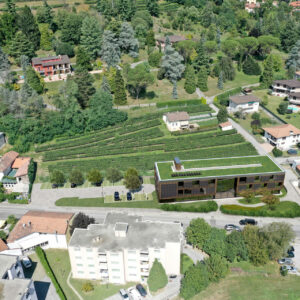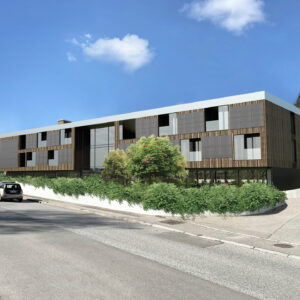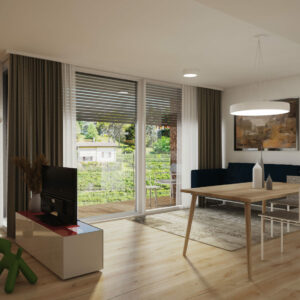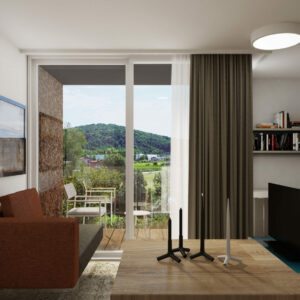Owner / Investor
Stabio Life SA c/o SWIX Family Office SA
Architect
Arch. Giuseppe Rossi, Studio di Progettazione Martinelli e Rossi Sagl
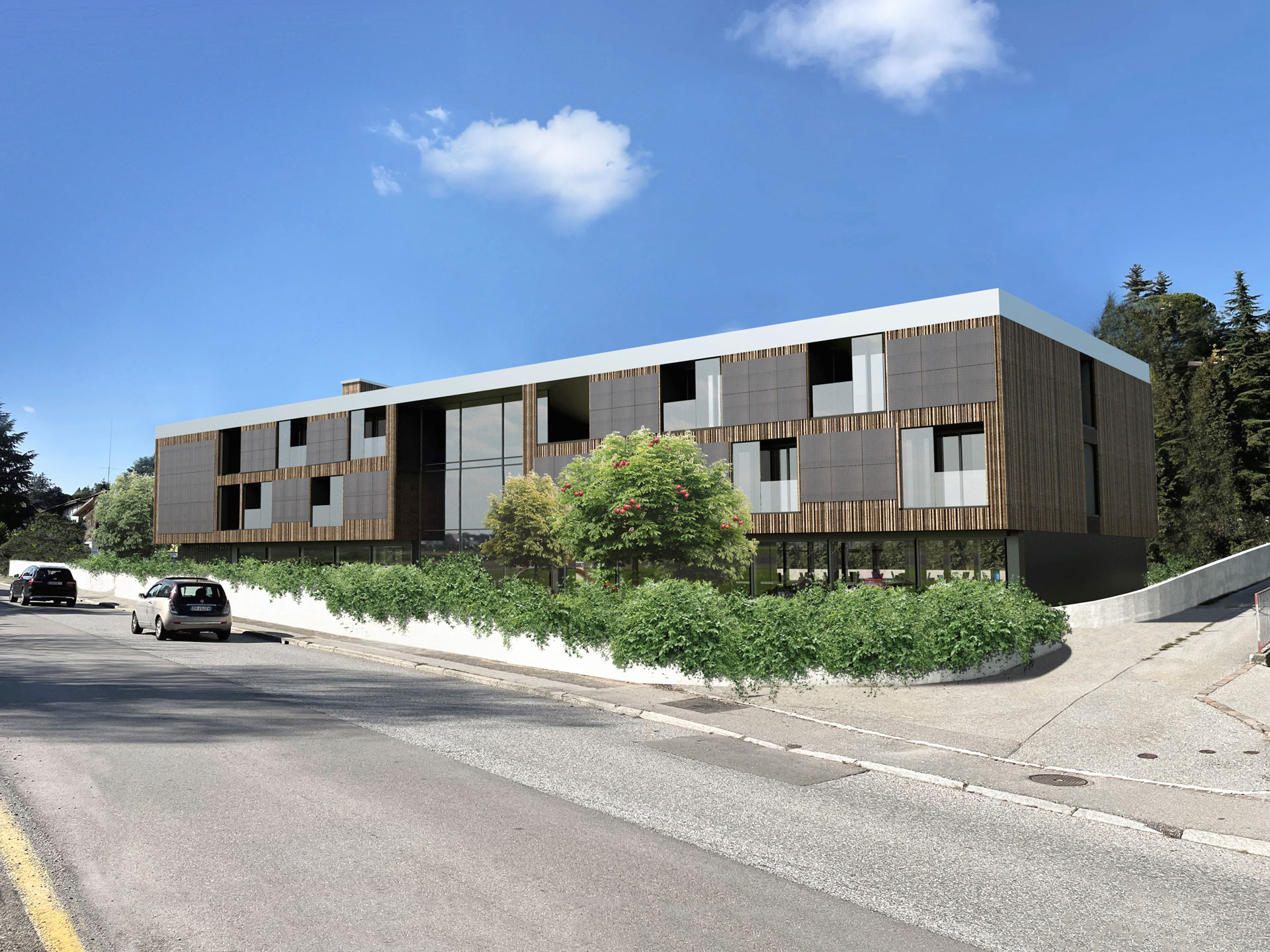
ENERGY
Both for energy reasons (reaching the Minergie P-ECO standard) and for comfort reasons, the entire building is equipped with a controlled ventilation system. Thanks to this system, it is possible to ensure good indoor air quality without opening the windows. The injected air is filtered of pollen and dust. Thanks to a heat exchanger, thermal energy is recovered from the expelled air and released into the injected air. This means that energy losses due to ventilation were reduced to a minimum. Standard ventilation through windows would not filter the air of impurities and energy would be lost.
Groundwater is the energy carrier, a choice consistent with the context. The project is located near the natural water system, which constitutes a superficial source of the Laveggio. The aquifer is located just over 3 meters deep. Thanks to the heat pump, it is possible to extract thermal energy from the groundwater present in the subsoil. A very efficient system considering the rather constant temperature of the water, which is warmer than the air during the heating season. During the warm months, the natural temperature of the groundwater is exploited as much as possible, minimizing the need to produce chilled water through the heat pumps and the consequent consumption of electricity (Freecooling).
PLANT ENGINEERING
The heating and domestic hot water supply system is provided via water-to-water heat pumps (power 50 kW), which serve the entire building. The air exchange works with a mechanical system and purification through sequential filter systems. A 20.3 kWp photovoltaic system was built on the south and west facades and a small part of the roof of the building. The plant was sized for self-consumption. In the office there are also fan coils along with the windows, to reduce the fall of cold air from the large windows.
HOME AUTOMATION
The regulation, control, and management system of the electronic components are managed with a general home automation system that controls the accesses and also corrects the use of the building itself. The system is capable of detecting consumption, forgotten open windows, and ionizing radiation, all in the logic of sustainable comfort.
COLOR AND MATERIAL HARMONIZATION
All technological settings have been carefully considered in the architectural design. Last but not least, the choice of the wooden casing covered with portions of photovoltaic glass tiles set in live cork. Natural colors and materials characterize the outer shell of the building. Artificial color and light variations mixed with natural colors and light characterize the interiors.
The residential building will be Minergie P-ECO certified and will be the first building in Ticino to reach the Swiss sustainable construction standard (SNBS). The urban model to which we refer is that of the “smart city,” or intelligent city, with the implementation of community housing models according to the most recent “smart living” and “co-working” methods. The volumetric compactness of the new building was a prerequisite for ensuring the high energy standard.
RAW CONSTRUCTION
From a structural and constructive point of view, the building can be divided into 2 systems. The first system, attributable to the massive construction, includes the small basement, the ground floor, and the central distribution volume built with a recycled reinforced concrete structure. On the first and second floors, there are two macro-volumes – attributable to the apartments – designed according to prefabrication logic in wood with a mainframe structure, except the intermediate slab provided in XLAM (crossed laminated wood).
EXTERNAL FINISHES
The external facades are covered with exposed cork panels integrated with the photovoltaic panels arranged as isolated tiles. The windows are made of internal wood and external aluminum. The parapets, as well as acoustic shields for the loggias, are made of laminated glass. The solar protection was implemented with an external roller blind system.
INTERIOR FINISHES
Internal doors and floors are made of wood.
The internal wall and ceiling coverings are mainly painted gypsum-fiber to guarantee acoustics and incombustibility.
The custom-made furniture is mainly wood.
COVERAGE
The roof is covered with an extensive green roof system to regenerate the biodiversity of the neighboring context.
A small portion of the roof is covered with additional photovoltaic cells.
The building, by its very nature of artificial intervention on natural soil, not only did not want to worsen the current situation but wanted to improve it thanks to the adhesion to an applied research project promoted by the SUPSI DACD on regenerative buildings. The project has verified and monitored the balances in terms of biodiversity over time. In particular: maintenance of the interconnection with the surroundings, elimination of invasive neophytes, increase in the presence of native botanical species based on biodiversity objectives, and protection measures for small fauna from the danger of the road.
